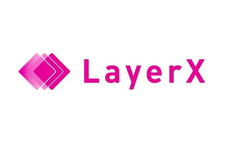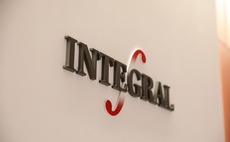
Alternative fuels: Burning questions

From the landfill to the inside of atoms, the alternative fuels angle on energy transition gives investors a range of risk profiles to consider. Developed economies are the primary playgrounds
Sometimes private equity investors get involved in alternative fuels seemingly by accident. Korea has illustrated this best in the past few years.
When countries hit the USD 30,000 mark for per-capita GDP, a number of consumer-related phenomena begin to shift, one of which is a tendency for waste management to become a significant public issue. Korea hit that milestone in 2017, and investors have responded accordingly.
One result has been an anomalous surge in local private equity support for alternative fuels. Hahn & Company appeared to be the first mover, carving out the recycling-enabled biofuels division of SK Chemicals for KRW 382.5bn (USD 292m) in early 2020. Hana Financial quickly followed with a KRW 100bn investment in Vine Enviro, a waste-to-energy (WTE) company set up by Equis Development.
VIG Partners is the latest to join the party, acquiring a controlling stake in WTE operator BioEnergy Farm Asan last year for about USD 100m. It is touted as the largest player of its kind locally in terms of wastewater processing, with a nameplate throughput capacity of 950 tons of waste a day.
BioEnergy sells its biogas to domestic utilities, but also produces electricity on-site by burning purified by-products of the biogas creation process. That energy – enough to power more than 300 homes every month – is sold to Kepco, the largest local utility, via the Korea Power Exchange.
The main biogas product already generates USD 3.6m of revenue a year, with significant output going to liquefied natural gas major JB Corporation. Meanwhile, the by-product electricity generation business is expected to more than double in the foreseeable future.
All this is most interesting because BioEnergy at its heart is not an energy business. It was created for – and most revenue is generated from – environmental waste disposal. For the moment, the WTE business is ancillary, but it is set to become core.
"We think energy creation for a company like this is becoming a much more interesting financial play, so we'll be investing heavily into boosting that side of it," said Jason Shin, a managing partner at VIG. "Eventually, it will become a substantial portion of the business in terms of revenue."
There is scope for these companies to become even more adventurous in terms of alternative fuels. Hahn & Co's investment, for example, was not envisioned as an emerging technology play, yet it is contemplating expansions into less proven adjacencies.
"We want to bring in different feedstocks in the biofuel portfolio," Scott Hahn, CEO of Hahn & Co, said. "We're making a big push to supply our shipping companies with bio-heavy fuel, which can also be used at oil-fired power plants. Several refineries globally are trying to make bio-jet fuel, but it's not yet at scale."
Patient capital?
Biofuel for aviation, known as sustainable aviation fuel (SAF), has been tinkered with since 2008 but R&D spending has reached new highs in recent years as energy conservation concerns have spiked.
A recent study by Shell indicated that SAFs should be the focus for aviation in the near term because low-carbon technologies such as electric and hydrogen propulsion are unlikely to be in widespread use until 2040 or later. SAFs are expensive to make and currently account for less than 1% of flights, but they can be blended with conventional fuels without engine modification until costs come down.
Nevertheless, private equity and venture capital investors interested in alternative fuels have tended to gravitate toward what appear to be longer-term plays.
Hydrogen is the most kinetic of these areas, with investment spurred on by a robust non-energy market around steelmaking, fertilizers, and other chemical applications. Japan is the most aggressive Asian jurisdiction in terms of putting capital to work, with nearly USD 1bn earmarked specifically for hydrogen each year, according to the International Renewable Energy Agency.

Hysata's core offering is a process for electrolysis – the clean method for separating hydrogen from water molecules – that uses 40% less power than conventional technologies. Most of the company's initial business relationships are in the chemicals space, but energy production is on the radar.
"As the cost of green hydrogen comes down and the storage and distribution get more sophisticated, you may find it getting into more use-cases," said Blair Pritchard, a partner at Virescent, who flags industry forecasts that hydrogen could represent 20% of global energy production by 2050.
"The initial market is industrial, but it fits in the energy space because we're trying to figure out how to bottle renewable energy. The other low-hanging fruit is energy storage for grid balancing. That is slightly behind industrials in terms of customers, but those applications will come in the second half of the decade."
For many investors, the challenges around embracing hydrogen as fuel stem from the capital expenditure tied to infrastructure requirements. Hong Kong's Audacy Ventures, which has roots in cleantech real assets but mostly targets technology-style returns, consequently found its entry where the segment intersects with mobility.
Audacy has backed three hydrogen companies since its inception in 2017, all leveraging the technology's advantages related to low battery weight and potential for extended range logistics and transportation applications.
They include Singapore's H3 Dynamics, a drone maker with long-term plans in commercial hydrogen aviation, as well as US-based players Hyzon Motors and GenH2. Hyzon specialises in zero-emission heavy-duty trucks, while GenH2 envisions a network of refuelling stations for hydrogen vehicles.
There are no shortages of practical challenges to these projects, not least the energy burden of keeping liquid hydrogen stable at extremely low temperatures. The smaller the container, the more product is lost via condensation. But GenH2, which was founded by ex-NASA engineers, is said to have the jump on the issue thanks to experience developing hydrogen tanks for tough environments.
"The supply chain has enabled the costs to come down and in the meantime the technology keeps improving," said Toby Chan, co-founder of Audacy.
"The market has realised the potential of the technology and started giving good valuations for companies. The likes of Tesla [which recently launched a hydrogen car] have helped the sector get attention, and it's better understood. We felt as of 18 months ago, the time was right."
Going nuclear
Further down the risk curve, the technical question marks and their balancing rewards continue to multiply. As a result, fusion power, the most esoteric play on hydrogen as fuel, is seeing a proliferation of R&D-stage unicorns.
US-based TAE Technologies has raised USD 1.2bn from the likes of Google, Chevron, Sumitomo Corporation, and New Enterprise Associates, claiming it would provide fusion power to a grid by the early 2030s. Meanwhile, CFS, a UK-based Massachusetts Institute of Technology spinout has received USD 2bn from Safar Partners, Starlight Ventures, and Australia's Hostplus among others.
The global leader is arguably US-based Helion, which secured USD 2.2bn in funding last November – USD 1.7bn of which is contingent on performance milestones – from Mithril Capital, Capricorn Investment Group, and a host of high net worth individuals. The company says it is on track to produce electricity from fusion by 2024.
In Asia, Japan is the only substantial ecosystem, albeit considerably less developed. Standouts include Kyoto Fusioneering, which raised a JPY 2bn (USD 15m) round in February from a group including Jafco, Global Brain, Daiwa Corporate Investment, and Coral Capital.
As in the hydrogen space, fusion investors justify committing to the industry's long and uncertain development timelines by targeting start-ups with revenue-producing side projects. In the case of Kyoto Fusioneering, this involves selling reactor essentials such as lithium blankets, plasma exhaust equipment, and gyrotrons to other fusion companies.
"They are actually financially viable sooner than you might think," said James Riney, co-founder of Coral. "These components cost millions of dollars and need to be replaced every 2-3 years. So, I'd say it sustains them well long-term. Think TSMC versus Apple."
The most recent demonstration of Japanese VC appetite for this segment came in April, when EX-Fusion raised a JPY 130m seed round from Anri and Osaka University Venture Capital. The plan is to prove a novel technique of using high-power pulse lasers to continuously generate neutrons in fusion reactions.
Anri got comfort from EX-Fusion's revenue business around selling reactor parts and deuterium-tritium fuel (essentially helium nuclei), making its first investment from its first dedicated cleantech fund. The vehicle, which has a target of JPY 10bn, achieved a first close of JPY 4.3bn in January and has an accommodating 15-year horizon.
"We can patiently wait out EX-Fusion's long development timelines, and we believe it can compete with other fusion start-ups in the world," said Masahiro Sameshima, a general partner at Anri.
"[In five years], we will have completed the development of the fundamental systems for the commercialisation of laser fusion reactors – the continuous target injection system and the laser target tracking system – and we will be ready for all technical demonstrations."
Latest News
Asian GPs slow implementation of ESG policies - survey
Asia-based private equity firms are assigning more dedicated resources to environment, social, and governance (ESG) programmes, but policy changes have slowed in the past 12 months, in part due to concerns raised internally and by LPs, according to a...
Singapore fintech start-up LXA gets $10m seed round
New Enterprise Associates (NEA) has led a USD 10m seed round for Singapore’s LXA, a financial technology start-up launched by a former Asia senior executive at The Blackstone Group.
India's InCred announces $60m round, claims unicorn status
Indian non-bank lender InCred Financial Services said it has received INR 5bn (USD 60m) at a valuation of at least USD 1bn from unnamed investors including “a global private equity fund.”
Insight leads $50m round for Australia's Roller
Insight Partners has led a USD 50m round for Australia’s Roller, a venue management software provider specializing in family fun parks.








